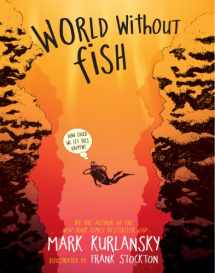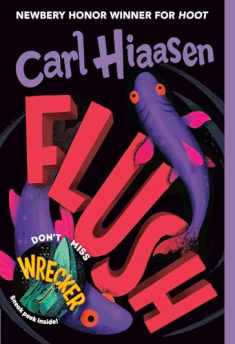
World Without Fish
ISBN-13:
9780761185000
ISBN-10:
0761185003
Edition:
Illustrated
Author:
Mark Kurlansky
Publication date:
2014
Publisher:
Workman Publishing Company
Format:
Paperback
208 pages
Category:
Evolution
FREE US shipping
Book details
ISBN-13:
9780761185000
ISBN-10:
0761185003
Edition:
Illustrated
Author:
Mark Kurlansky
Publication date:
2014
Publisher:
Workman Publishing Company
Format:
Paperback
208 pages
Category:
Evolution
Summary
World Without Fish (ISBN-13: 9780761185000 and ISBN-10: 0761185003), written by authors
Mark Kurlansky, was published by Workman Publishing Company in 2014.
With an overall rating of 3.9 stars, it's a notable title among other
Evolution
books. You can easily purchase or rent World Without Fish (Paperback) from BooksRun,
along with many other new and used
Evolution
books
and textbooks.
And, if you're looking to sell your copy, our current buyback offer is $0.43.
Description
A KID’S GUIDE TO THE OCEAN
"Can you imagine a world without fish? It's not as crazy as it sounds. But if we keep doing things the way we've been doing things, fish could become extinct within fifty years. So let's change the way we do things!"
World Without Fish is the uniquely illustrated narrative nonfiction account—for kids—of what is happening to the world’s oceans and what they can do about it. Written by Mark Kurlansky, author of Cod, Salt, The Big Oyster, and many other books, World Without Fish has been praised as “urgent” (Publishers Weekly) and “a wonderfully fast-paced and engaging primer on the key questions surrounding fish and the sea” (Paul Greenberg, author of Four Fish). It has also been included in the New York State Expeditionary Learning English Language Arts Curriculum.
Written by a master storyteller, World Without Fish connects all the dots—biology, economics, evolution, politics, climate, history, culture, food, and nutrition—in a way that kids can really understand. It describes how the fish we most commonly eat, including tuna, salmon, cod, swordfish—even anchovies— could disappear within fifty years, and the domino effect it would have: the oceans teeming with jellyfish and turning pinkish orange from algal blooms, the seabirds disappearing, then reptiles, then mammals. It describes the back-and-forth dynamic of fishermen, who are the original environmentalists, and scientists, who not that long ago considered fish an endless resource. It explains why fish farming is not the answer—and why sustainable fishing is, and how to help return the oceans to their natural ecological balance.
Interwoven with the book is a twelve-page graphic novel. Each beautifully illustrated chapter opener links to the next to form a larger fictional story that perfectly complements the text.
"Can you imagine a world without fish? It's not as crazy as it sounds. But if we keep doing things the way we've been doing things, fish could become extinct within fifty years. So let's change the way we do things!"
World Without Fish is the uniquely illustrated narrative nonfiction account—for kids—of what is happening to the world’s oceans and what they can do about it. Written by Mark Kurlansky, author of Cod, Salt, The Big Oyster, and many other books, World Without Fish has been praised as “urgent” (Publishers Weekly) and “a wonderfully fast-paced and engaging primer on the key questions surrounding fish and the sea” (Paul Greenberg, author of Four Fish). It has also been included in the New York State Expeditionary Learning English Language Arts Curriculum.
Written by a master storyteller, World Without Fish connects all the dots—biology, economics, evolution, politics, climate, history, culture, food, and nutrition—in a way that kids can really understand. It describes how the fish we most commonly eat, including tuna, salmon, cod, swordfish—even anchovies— could disappear within fifty years, and the domino effect it would have: the oceans teeming with jellyfish and turning pinkish orange from algal blooms, the seabirds disappearing, then reptiles, then mammals. It describes the back-and-forth dynamic of fishermen, who are the original environmentalists, and scientists, who not that long ago considered fish an endless resource. It explains why fish farming is not the answer—and why sustainable fishing is, and how to help return the oceans to their natural ecological balance.
Interwoven with the book is a twelve-page graphic novel. Each beautifully illustrated chapter opener links to the next to form a larger fictional story that perfectly complements the text.


We would LOVE it if you could help us and other readers by reviewing the book
Book review

Congratulations! We have received your book review.
{user}
{createdAt}
by {truncated_author}




